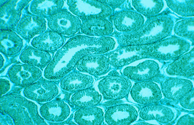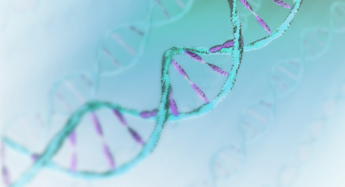Patentability of parthenogenic stem cells - an update
September 2014
In June 2013, we reported that in International Stem Cell Corporation ("ISCC") v Comptroller General of Patents1, another reference had been made to the Court of Justice of the European Union (CJEU) for a preliminary ruling on the patentability of stem cells, under Directive 98/44/EC (the "Biotechnology Directive"). The question referred concerned whether stem cells obtained from parthenogenetically stimulated human ova are excluded from patentability as "human embryos".
The reference followed a ruling by the CJEU in its Brüstle decision2 that stem cells obtained from human embryos directly, or indirectly, are unpatentable, and its application in the German Supreme Court. However, the technology at issue in ISCC uses parthenogenetic activation of oocytes and so does not involve the destruction of a fertilised ovum capable of developing into a human being. For this reason it is seen as a more ethical alternative to the technology at issue in Brüstle.
 The ISCC seeks two patents for a technology that produces stem cell lines and corneal tissue specifically, from the parthenogenetic activation of an unfertilised ovum. It was common ground between the ISCC and the Comptroller that such parthenogenetically-activated ova do not produce totipotent stem cells, but instead pluripotent cells, and are therefore not capable of developing into a human being.
The ISCC seeks two patents for a technology that produces stem cell lines and corneal tissue specifically, from the parthenogenetic activation of an unfertilised ovum. It was common ground between the ISCC and the Comptroller that such parthenogenetically-activated ova do not produce totipotent stem cells, but instead pluripotent cells, and are therefore not capable of developing into a human being.
Despite this, at first instance, the UK Intellectual Property Office (UKIPO) followed Brüstle and held that even parthenogenetically created stem cells are capable of commencing the process of development of a human being, and therefore they use human embryos for commercial purposes and are not patentable.
In coming to this decision, the UKIPO considered and applied the CJEU ruling in Brüstle. In this case, the CJEU decided that as soon as a human ovum is fertilised, it becomes an embryo because it commences the process of development of a human being. However, in relation to unfertilised parthenogenetically-activated ova, the CJEU appeared to have worked on the assumption that such an ovum can proceed to term (or intended that it was only necessary to commence the process of development and not necessarily to complete it). The CJEU held that the classification of "human embryo":
"must also apply to a non-fertilised human ovum into which the cell nucleus from a mature human cell has been transplanted and a non-fertilised human ovum whose division and further development have been stimulated by parthenogenesis. Although those organisms have not, strictly speaking, been the object of fertilisation, due to the effect of the technique used to obtain them they are, as is apparent from the written observation presented to the Court, capable of commencing the process of development of a human being just as an embryo created by fertilisation of an ovum can do so".
The ISCC argued that the CJEU is incorrect as a matter of scientific fact and that its ruling on Brüstle's technology should not apply to include parthenogenetically-activated ova. On the contrary, the ISCC argued that it was acte clair that parthenogenetically activated stem cells were not excluded from patentability.
In particular, the ISCC focused on the reasoning in the CJEU's above statement that to be a human embryo it was necessary to be "capable of commencing the process of development of a human being which leads to a human being". The ISCC argued amongst other things, that, in context, the Brüstle decision only excluded parthenotes insofar as they were capable of producing totipotent cells.
 However, the Comptroller argued that the CJEU's judgment could also be read as excluding parthenotes from patentability even if they were ultimately incapable of producing a human being. The Comptroller therefore submitted that the test was not clear and that a further reference to the CJEU was necessary. Consequently, on appeal from the UKIPO to the Patents Court referred the issue to the CJEU.
However, the Comptroller argued that the CJEU's judgment could also be read as excluding parthenotes from patentability even if they were ultimately incapable of producing a human being. The Comptroller therefore submitted that the test was not clear and that a further reference to the CJEU was necessary. Consequently, on appeal from the UKIPO to the Patents Court referred the issue to the CJEU.
Advocate General (AG) Cruz Villalón has now published his Opinion in this case3 stating that such cells should not be considered "human embryos" under the Directive:
Unfertilised human ova whose division and further development have been stimulated by parthenogenesis are not included in the term 'human embryos' in Article 6(2)(c) of Directive 98/44 ... on the legal protection of biotechnological inventions
Subject to this proviso:
as long as they are not capable of developing into a human being and have not been genetically manipulated to acquire such a capacity.
This Opinion comes despite the CJEU ruling in Brüstle that an organism "capable of commencing the process of development of a human being" is unpatentable. The AG explains that by this the CJEU meant that the decisive criterion in determining patentability is whether the organism has the "inherent capacity to develop into a human being", which parthenogenic cells do not.
 If the CJEU now follows this Opinion, such cells will not be barred from patentability on the basis of Article 6(2)(c), provided they are not manipulated to be capable of developing into a human being. The Opinion of the AG therefore moves some way towards striking a balance between protecting human dignity and integrity, which is a purpose of the Biotechnology Directive, and providing patent incentives for research. The CJEU ruling that must come next in this case is therefore going to be important for those hoping to develop and invest in similar stem cell therapies commercially. However, even if the CJEU does not come to the same view as the AG, other technologies for making stem cells are available that claim not to involve the destruction of a human embryo and further test cases would be needed to determine whether these fall outside the scope of the CJEU ruling in Brüstle.
If the CJEU now follows this Opinion, such cells will not be barred from patentability on the basis of Article 6(2)(c), provided they are not manipulated to be capable of developing into a human being. The Opinion of the AG therefore moves some way towards striking a balance between protecting human dignity and integrity, which is a purpose of the Biotechnology Directive, and providing patent incentives for research. The CJEU ruling that must come next in this case is therefore going to be important for those hoping to develop and invest in similar stem cell therapies commercially. However, even if the CJEU does not come to the same view as the AG, other technologies for making stem cells are available that claim not to involve the destruction of a human embryo and further test cases would be needed to determine whether these fall outside the scope of the CJEU ruling in Brüstle.
Please note that the CJEU has now ruled in this case. See update, CJEU rules on parthenogenic stem cells.
If you have any questions on this article or would like to propose a subject to be addressed by Synapse please contact us.


Dr Matthew
Royle
Matthew is a senior associate in the Intellectual Property department based in our London office.

Paul England
Paul is a senior associate and professional support lawyer in the Patents group based in our London office.
"The Opinion of the AG therefore moves some way towards striking a balance between protecting human dignity and integrity … and providing patent incentives for research."

